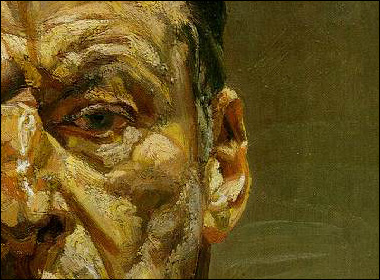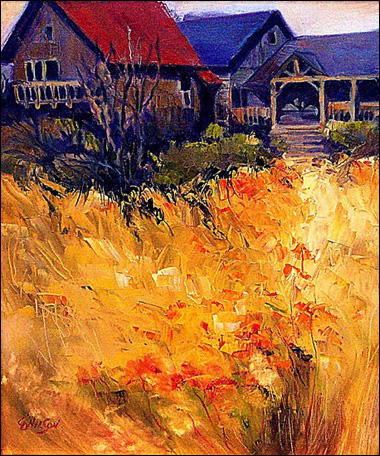What is impasto? Impasto is an art term used to describe thickly textured paint that is almost three-dimensional in appearance.
Using an impasto technique often leaves visible brush strokes in the finished painting. Many times those brush strokes are actually more important than the subject matter itself.
You could almost say impasto is a type of sculpture—but for painters. And on a canvas.
How to spot impasto painting technique
If you see a painting and you’re not sure whether the artist has used impasto technique, just look at the painting from the side. Check for globs of paint sticking out from the canvas. That’s impasto.
From the front, impasto paint is highlighted by whatever natural light is in the room (since it sticks out so much) and with heavy impasto you’ll be able to see shadows underneath the paint too.
Unlike wet-on-wet blending techniques, impasto really makes a physical statement, which is why you’ll find it most often in expressive, abstract works.
At least, that’s the way it is today.
You see, impasto has been around for a long time, and it wasn’t until Van Gogh came along that impasto was used for it’s expressive qualities. Before Van Gogh, artists would build up layers of paint to add realism to their work, making objects appear more three-dimensional.
But Van Gogh was different. He used impasto to gave weight to his brilliant colors, movement to his skies, and emotion to his landscapes.
Check out this detail of Van Gogh’s Wheat Field with Cypresses.
He could have painted with the exact same colors without the impasto, but what would have happened? There would have been no movement, no feeling in the painting. No Van Gogh.
Techniques for painting thick impasto texture
If you’re an artist, impasto’s not too tricky to do yourself.
Mostly it involves loading up your brush or painter’s knife with more paint than you’d normally need. Then, instead of “dying” or “scrubbing” the canvas with color, just let the paint squish onto the canvas and sit there.
You don’t want to fiddle with any one spot too much, otherwise you’ll lose that three-dimensional quality by overworking the paint.
In this detail of one of my favorite paintings, a self-portrait by Lucian Freud, you can see another type of impasto.
Freud created a gritty, scumbled-on texture by sort of scraping color onto the canvas. Each pass with his brush adds a little more thickness onto the dried paint underneath it.
Look at the contrast between his craggy features and the smooth green background—the impasto not only adds character to his face, but it really shows how much depth can be achieved with this technique.
Carol Nelson, an artist I featured a few months ago, makes great use of that depth in one of her landscapes entitled Red Roof.
You can see how her thickly painted wheat jumps forward, creating a lot of visual space. Of course, it’s also a warm color, so that helps too, but it’s still a good use of impasto.
Impasto’s a simple way to give an average painting a big boost, so why not challenge yourself to try out impasto in your next painting? If you’ve never really done it before, break out of your comfort zone and pile on the paint!
This post may contain affiliate links.



